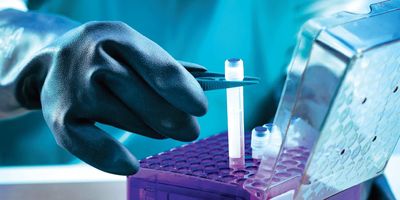Top 6 Tips When Implementing a Lab Environmental Monitoring System
An EMS is a vital part of ensuring facility health
Modern laboratories need the 21st century boost to effectively intake data for facility health and responsiveness. Life science facilities require top-of-the-line environmental sensors and monitoring systems to effectively serve industries like healthcare, biotech, pharma, medical devices, and patient care. As a result, the lab becomes more stable and predictive, making it more efficient to perform daily operations and reaching goals to launch drugs.
Laboratory monitoring solutions are the key to optimizing facility health. Labs working on products and programs using siloed sensors don’t have a holistic overview of how the environment affects costly equipment. An environmental monitoring system (EMS) addresses that by collecting data from all the sensors in the facility, generating a complete picture of the facility’s condition.
Here are some of the major tips for managers and stakeholders to start with when researching a new monitoring system for their life science facility:
1. Define Your Goals
Before implementing an EMS, it's important to define the goals of the system. Some key questions to consider are:
- What equipment and ambient parameters do you need to monitor?
- Which items are essential, and which ones would be nice to have?
- Who is going to be the system owner?
- Do you need to adhere to different regulations?
- What kind of validation will you need?
- Which departments will need access?
- How many users will there be?
- How should user access be controlled?
- Do you have a set budget for this project?
2. Choose the Right Sensors
When selecting a sensor, it’s critical to find one that is accurate, reliable, and suitable for the environment you are monitoring. Defining your needs is part of the process, and you need to know the lab’s environment like the back of your hand.
For example, you might consider light intensity as one factor you need to measure in a vivarium to ensure animals can have the rest they need. However, do you need to monitor the lux in the room or just whether the lights are on or off? Understanding what real-time data you need for a situation will allow you to adapt quickly and avoid any costly mistakes. The next step is to ask your vendor about calibration options for your sensors. A few questions to consider: How are your sensors calibrated? What’s the lifespan of the sensor? What is the sensor’s accuracy? How much does the sensor drift over time?
3. Plan Your Alarm Protocols
When you’re determining your alarm protocols, it’s important to know the parameters you want to set for limits, warning, and delay times. Plan a meeting with the key stakeholders from each department and work through some important questions, like: Who should get alarms for what equipment? Will that change by day of the week and time of day? And also realize that what you come up with in the initial meeting is likely to change after you start using the system. Make sure you select a system with highly customizable alarm escalation paths so the right person receives the alarms every time. Using service experts to help navigate these decisions and adjust configurations as you evolve will save time and make adoption smoother.
4. Hire Professionals
When it comes to physically installing an EMS, you want to follow best practices to ensure the implementation is successful. Investing in highly qualified professionals is the best way to ensure success. If you leave installation in the hands of those who are unqualified, it will cost more money to combat any shortcomings. A low-quality installation only results in more headaches for the team to manage in the long run. In addition, assigning your core team the task of installation can disrupt their original responsibilities and cause expensive operational delays.
5. Use a Cloud-Based Platform
Data integrity and quality are critical when implementing an EMS. You need to ensure your data is compliant, safe, and protected so that third-party vendors and hackers can’t access it. Using a cloud-based platform is one of the best and most cost-effective options. Some of the most important benefits include:
- Convenience: Using a cloud-based EMS eliminates another system that IT has to support and allocate space for in their server room.
- Remote access: Your team can access the EMS from anywhere in the world.
- Ease of maintenance: When managed by a service provider, it makes it easy to maintain the EMS platform. When something happens, the provider can immediately start troubleshooting to restore connectivity and minimize any system downtime, reducing lags in operation and saving you resources.
6. Review and Improve
Implementing an EMS should involve periodic reviews and improvements to ensure it remains effective and meets the changing needs of the organization. XiltriX provides these expertise services to ensure your equipment runs smoothly and effectively. We ensure the system is always working and we work hand in hand with our clients to set up limits, alarm escalations, delay times, and user access. The system runs in the background continuously and settings are customized based on your needs. We work as partners with our clients to ensure alarms are never missed. Our SafetyNet team is also on every alarm protocol to act as a second line of defense and ensure alarms are never missed.

Implementing an environmental monitoring system requires careful planning, training, and ongoing evaluation. By choosing XiltriX, you will have a connected system that is effective, efficient, and reliable, ensuring a stable environment as well as the health and safety of living organisms. With professional installation, a 24/7 SafetyNet monitoring team, and full system support, you’ll have full knowledge, control, and insight into everything going on in your facility while saving time and valuable resources.
Schedule a consultative call with a XiltriX expert to discuss your current lab monitoring processes and how we can help.

